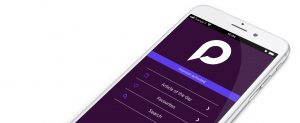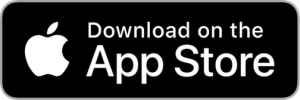Digital Health Week, which takes place between the 29th November and 3rd December, is a global week of action to advocate for digital health and its critical role in providing health for all by 2030.
Online learning is exploding, particularly in the wake of COVID-19, but the true opportunity that online learning offers in contributing to digital health is only realised if necessary consideration is given to digital accessibility. With the support of the USAID funded Learning, Acting, Building for Rehabilitation (ReLAB-HS), Physiopedia is developing a set of digital platforms for rehabilitation, including an online learning platform to advance the education, training and professional development of Rehabilitation Professionals, wherever they are in the world. To mark Digital Health Week, Lucy Aird from Physopedia explores what digital accessibility means in relation to this work, and how educators can ensure their content is accessible.
The power of the web is in it’s universality. Access by everyone regardless of disability is an essential aspect – Tim Berners-Lee, W3C Director and inventor of the World Wide Web
Online platforms present an attractive and accessible place for learning for many people, both with and without disabilities, but there remain a number of barriers that prevent or hinder access for some groups. People with reduced functioning, such as vision, hearing, movement or cognitive impairments, can face multiple difficulties. These online students with reduced functioning can become invisible and this can lead to unintended accessibility problems. Addressing inequity is at the heart of the ReLAB-HS project and ensuring that all digital platforms are accessible is a vital element of that.
Other barriers to access can relate to the language people speak or where they live in the world. Physiopedia has many years of experience in providing a diverse global audience with inclusive access to online learning, here are our 7 things to think about when creating an accessible online learning environment.
1. Be Mobile
There are more than 4.6 billion internet users worldwide – and 93% of these use a mobile device. To make sure the learning you develop is going to work for global consumption it needs to work well on a smartphone. This involves thinking about page layout, text size, how it displays on small screens, its compatibility with touch screen interactions and how you navigate the site on a phone.
Digital Accessibility addresses the issues related to making digital products, websites, mobile apps and other digital tools and technologies, accessible to everyone. It is about providing all users access to the same information, regardless of ability and any impairments they may have.
2. Work On and Offline
Online learning often relies on live-streamed or pre-recorded video content, which requires a good internet connection. Only about 35% of people in developing countries have access to the internet, with those in poor and rural areas having poorer connectivity.
 For learners around the world to access videos, you must provide a variety of resolution settings, so those with a poorer connection can opt for a lower quality video without missing out on the content. Better still, offer alternative media alongside your video content. Audio files and text transcripts all offer lower bandwidth alternatives, and mean that digital products such as online courses can be provided equally to users all over the world.
For learners around the world to access videos, you must provide a variety of resolution settings, so those with a poorer connection can opt for a lower quality video without missing out on the content. Better still, offer alternative media alongside your video content. Audio files and text transcripts all offer lower bandwidth alternatives, and mean that digital products such as online courses can be provided equally to users all over the world.
“I recognise this as an incredibly powerful resource. This changes how in a Low-and-Middle-Income-Countries we can access current, best-practice knowledge. This allows the development of the profession globally in a consistent and reliable way… I can see this will become a regular go-to resource.” – Physiopedia App User
And for the 65% of people in developing countries that don’t have regular access to the internet, having an option to download content to use offline at a later date is invaluable. A good example of this is the The Physiopedia App, which was developed specifically to address this issue and has been a game changer for rehabilitation professionals in low resourced settings to access knowledge. You can download the app
3. Think Beyond English
Despite more than half of all content on the internet being in English, around 75% of the world’s population don’t speak it. In our work we’ve been overwhelmed with the enthusiasm for learning from all corners of the globe and we don’t want language to be a barrier. Whilst we are busy developing translation processes for multiple languages for the online courses that we will develop, we’ve found that by providing full text transcripts, users are able to use automatic translation services.
Transcripts are also useful for anyone with cognitive difficulties, or for people that just prefer to read, rather than watch. To actively accommodate user diversity in learning styles, culture and language it’s important to consider how you will facilitate learning by people all over the world.
4. Enable not disable
Without a doubt the disabled community has been one of the worst affected by the pandemic. But for many disabled learners, the restrictions enforced on us all were somewhat of a leveller – with many of the obstacles of communication and interaction being dismantled as the world moved away from face-to-face to online learning. However, badly designed online learning can still create barriers that may exclude people from accessing it.
Some simple tips to enable not disable:
- Include full text transcripts to video and audio files – this allows someone with a visual impairment to use a screen reader
- Include closed caption video subtitles to assist those with hearing impairments. But don’t just auto-generate these – if they are going to be accurate you’ll need to curate them
- Provide a variety of forms of media (video, audio, images, text) so users can choose what works best for them
Web Accessibility: Essential for some, useful for all
5. Support your educators
The fact that educators can record video from anywhere in the world using simple technology smashes a multitude of barriers to sharing knowledge. But not everyone with a valuable skill to share has experience in teaching or the relevant technologies.
It pays to invest in your presenters to help them create valuable learning content. This might mean upskilling them with technical know-how to record a great video, or working on communication skills to make sure the content is engaging for participants. These skills will improve the quality of content produced and also will allow these individuals to dramatically increase their own effectiveness and impact across their careers.
6. Invest in your team
ReLAB-HS has a dedicated team with a unique set of competences and experiences. Not only do we have skilled web developers, media editors and learning architects, but first and foremost many of them are also rehabilitation professionals with a unique insight into the content. Why does this matter?
Well it makes sure that the transcripts are technically accurate, the learning materials are enhanced with sympathetic editing and most importantly, the output is specifically tailored to those who will be using it – other rehabilitation professionals. To provide an awesome experience, a good and appropriately skilled team is vital.
7. Never stop learning and responding
Making digital resources accessible and inclusive is a never ending process. Technologies change, new methods of teaching emerge and new groups of users gain access to the Internet.
This means you need to recognise this is a continuous journey you will share with your team, your educators and your students. Each party has a role to play and everyone benefits from the progress that is made. Listen to and elicit feedback from your learners and great things happen!
We Are Always Improving
Our expert team are always looking for ways to improve the accessibility of our products. If you have ideas for improving the accessibility of our websites and digital products then we want to hear from you!
Also if you’re working in workforce development and would like to discuss the work that we are doing and opportunities for collaboration then we’d love to hear from you.
Other posts you might find useful:
- Find out more about the ReLAB project
- Discover How The Physiopedia MOOCs Contribute To Digital Health Transformation
- Find out why inclusion matters in digital health
- Discover how Digital Transformation is Key To Building Workforce Capacity in Ukraine
This work is supported by the USAID funded Learning Acting Building for Rehabilitation in Health Systems (ReLAB-HS) project and is not possible without the generous and committed contribution of the Leahy War Victims fund.
ReLAB-HS is made possible by the generous support of the American people through the United States Agency for International Development (USAID) and is implemented under cooperative agreement number 7200AA20CA00033. The consortium is managed by prime recipient, Johns Hopkins Bloomberg School of Public Health.



